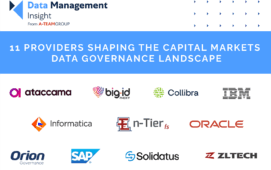The data that traders, researchers and risk managers need is often located across many systems. While ETL, middle-ware and traditional golden copy approaches are useful for data management, they don’t provide the business user with an easy way of analyzing this distributed data, says Xenomorph in its new white paper “TimeScape Data Unification”.
A key business and technical challenge for many large financial institutions is to knit together their many disparate data sources, databases and systems into one consistent framework that can meet the ongoing demands of the business, its clients and regulators, the vendor says. For example, post-crisis it is clear that risk managers need easy and more timely access to all kinds of data, regardless of data type (positional, market, entity), hosting system or data source.
Some have responded to this issue by implementing a middleware or ETL-type infrastructure. However, this is a technical solution to the data integration problem and does not go far enough in delivering a business-focused way of presenting data and allowing the more complex business objects to be analysed. As a result, risk management and trading staff are still left with the challenge of how best to access related datasets across a variety of disparate systems.
The data warehouse approach to golden copy data management can be very effective, but this can be difficult to implement in a short time-frame, particularly if the technology used lacks flexibility in its data model and is faced with a variety of intertwined legacy systems. Traditional golden copy management is often siloed alongside a particular asset class, type of data or business function and does not deal with the management of data once it has been delivered to downstream systems and users. Additionally, these traditional data management approaches often lack real-time analytical and business functionality.
Companies looking to satisfy the need for business-user access to data across multiple systems should consider a “distributed golden copy” approach. This federated approach deals with disparate and distributed sources of data and should also provide easy end-user interactivity whilst maintaining data quality and auditability. Access to data is normalised in real-time but the data itself is not duplicated in other databases and systems, hence problems with inconsistency are reduced.
“Data management for the end consumer is an often overlooked area and the federated approach to accessing distributed systems is an attractive architecture, one that can be used to augment ETL and centralized golden copy. This form of data virtualization is a very powerful data management technique, but it should be applied with the needs of both end users and technologists in mind,” concludes Brian Sentance, CEO Xenomorph.
Subscribe to our newsletter




